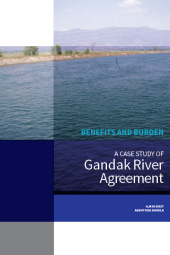Benefits and Burden: A Case Study of Gandak River Agreement
Summary
This study examines the 1959 Gandak River Agreement between Nepal and India, using it as a case study to evaluate the performance of infrastructure built under the treaty and its impact on Nepal. Specifically focusing on the Gandak Irrigation and Power Project (GIPP), which provides irrigation water through the Nepal Gandak West Canal (NGWC) and Nepal East Canal (NEC) in Nawalparasi District, the study reveals that households within the NGWC command area exhibit lower development indicators compared to neighboring districts and the national average. Despite the agreement's intent to benefit both countries, the local ecosystem in the GIPP service area faces degradation, perpetual flood inundation, and diminished community well-being. The findings underscore the need for a more nuanced understanding of transboundary water cooperation, considering local circumstances, infrastructure performance, and the evolving challenges posed by environmental degradation and climate change. Ongoing assessment of these challenges is crucial for informing discussions on transboundary water development and management.
Categories:
Case Studies
Publisher:
ISET and ActionAid
Published Year:
2017
